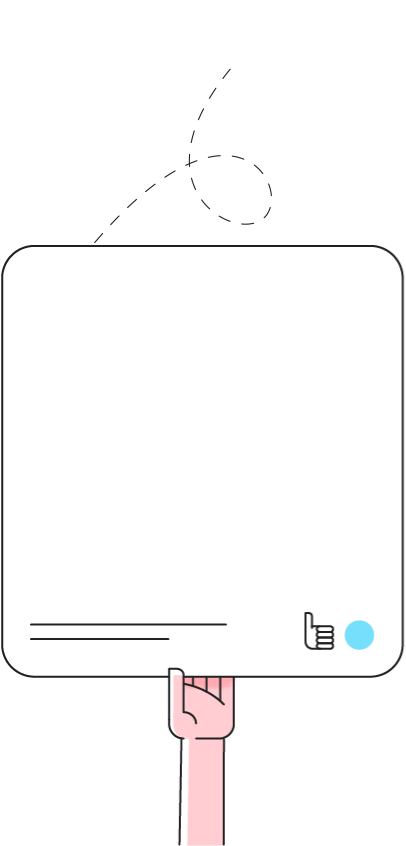Table of Contents
When a brand collaborates with an influencer to promote a product or service, many factors and metrics must be considered. One of the most important qualifications for influencers, of course, is audience size. Conventional logic says that the more followers a creator has, the more awareness they can generate for your product, service, or brand. However, before you blindly choose a creator for your campaign based on numbers alone, it’s important to acknowledge the existence of fake followers.
What are Fake Followers? Where Do They Come From?
Have you ever seen those faceless or extremely generic-looking profiles that lurk on your social media? Chances are they’re not real people. They’re bots. Yet, they are still everywhere.
Fake followers are nothing new. Big-time celebrities like Katy Perry, Taylor Swift, and Kourtney Kardashian have large percentages of false profiles following them. Unfortunately, celebrities are targets for bots, whether or not these influencers intentionally purchase them. Before Instagram, fake followers and the need for popularity existed in the MySpace days.
The 2021 HBO Documentary Fake Famous displays the prevalence of fake followers and how easy it is to get them. All it takes is a little money, and BAM, you have thousands of followers. However, the documentary is far from condoning the practice. Fake followers are suspicious and demand fake engagement, which, over time, was ultimately not deemed worthy of the money or effort.
Where do Fake Followers Come From
Oftentimes, a creator’s audience size is artificially inflated, whether by bots they bought or random ones on social media. There are many vendors online selling fake followers and engagement. If you haven’t purchased anything, bots can still follow or comment on you. Bots usually follow random people and celebrities, comment, and post to make them seem more real to their buyers.
Another form of inauthentic followers and engagement comes from “engagement pods,” where influencers or businesses collaborate to interact with each other’s profiles to increase visibility.
The Dangers of Fake Followers on Different Platforms
From a Brand’s Perspective
Influencer marketing is the future, but doing it wrong can be just as bad as (or worse than) not doing it. Contracting talent is not cheap, especially for creators with bigger followers. Choose to work with an influencer with many fake followers and few authentic engagements. Your brand messaging will never reach your target audience, wasting your dollars and efforts.
And who doesn’t want a successful campaign? Within a business, a successful marketing campaign not only has positive gains for the company but also for your team as well. After all, a history of successes will pave the way for better budgets for future campaigns.
@heatherofwildmedia Replying to @Isma #greenscreen sorry I got too excited! Heres how you check for fake followers. I am using this representing brands! #fakefollower #brandpartnerships #influencerdeals #contentcreatorsoftiktok
The Real Cost of Fake Followers for Brands
- Wasted money on ineffective influencer marketing: The money you spend generating fake follows and engagement will not drive sales.
- Wasted time and labor: Spending time to find websites that generate fake follows is simply a waste. Save your time and focus on genuine marketing.
- Damage to brand reputation and credibility: Followers who suspect you have fake follows will discredit your work as a brand and assume you care more about numbers over quality engagement.
From the Creator’s Perspective
It’s not just brands who need to be wary of fake followers. As a smaller creator who aspires to work with brands and strengthen their brand, fake followers are not inconsequential. When working with a brand, their team may look for certain metrics: impressions, engagements, conversions, etc. If you meet or exceed your projected metrics, brands are more inclined to continue working with you, bolstering your portfolio and marketability.
On the other hand, if you continuously underperform (whether that is due to fake followers or other reasons), you risk hurting your reputation and future sponsorships. Businesses want to work with brands that will help reach their campaign goals, not those who fluff their numbers to appear successful.
@hannahsocialfolk Did you know that you can buy fake social media followers? Lots of people do… so let’s expose how it works. When you buy fake followers, they’ll likely be bots 🤖 or inactive accounts, so they won’t engage with any of your content. This means, it’s unlikely your posts will show up on the fyp or explore page because the platform thinks your current audience aren’t engaging with your content. So the algorithm thinks your posts aren’t worth showing to real potential audiences newsfeeds. It’ll also make it really difficult to measure your real metrics. Luckily, not only is if obvious in lots of cases BUT there are ways of detecting it. Agencies like Social Folk use special software that flags this kind of stuff when working with influencers who have them. 🙅♀️ Let us know how you feel about fake followers in the comments. Do you think it’s ever obvious when people / influencers do it? #socialmediamanager #socialmediamarketing #socialmediamanagement #instagrammanagertips #fakefollower #socialmediatips #instagrammanager
In a somewhat ironic twist, the pressure to prove yourself as an influencer or business drives people to purchase fake followers and participate in engagement pods. However, it’s important to note that many businesses now check for falsities with software, so you’re on that brand’s blacklist if you’re caught faking anything.
The Real Cost of Fake Followers for Creators
- Actual money if you paid for fake followers.
- Social media platforms like Instagram and Twitter also periodically purge bots.
- Loss of credibility and future business opportunities.
From the Consumer Perspective
More and more studies are linking the effects of social media on mental health and self-esteem. Seeing celebrities, creators, and peers with thousands of views, followers, or subscribers can make you feel…like nothing. Knowing what’s reality and what’s not is crucial with social media. But understanding the scale of fake numbers on the platforms is just a small part of the danger.
Not all bots have faceless profiles. Some have pictures of real people, which could even be you. The New York Times reported that these companies selling fakes steal people’s identities online, using their image and name to interact with certain accounts. This would spell out big trouble for someone’s professional life.
Additionally, in pop culture, the usage of bots has been investigated for spreading fake news and swaying elections. Although bots may seem harmless, with malicious intent, they are extremely dangerous for media.
Detecting Fake Followers on Different Platforms
Fake followers aren’t just limited to Instagram. They’re on every single platform and probably following most influencers. Here are the main ways to know if someone has too many fake followers.
1. Metrics don’t match
If someone has a large following, their engagement shouldn’t be too low. You would also expect that engagements are relatively consistent across all posts and that their following grows appropriately over time. If there are huge jumps and inconsistencies with no plausible explanations, it’s a sign the creator has artificially pumped their profile. Therefore, your brand needs to benchmark metrics for specific following sizes.
2. Engagements are genric
It isn’t easy to distinguish between humans and bots regarding numbers, but it’s relatively easy to see in words. Take a glance at the comment section. Bots usually offer generic responses or emojis, while real people would have something more personal to say.
3. Enlist the help of agencies and software
Bot technology is becoming more complex by the day. Getting help from agencies or software to detect the number of fake followers someone can free up your time.
Concluding Thoughts: Avoid Fakes at All Costs!
Social media is a daunting and competitive world for influencers and brands. Fake followers are bad news for a brand, creator, and consumer. Bots are unlikely to go away, so what’s important is being aware and taking precautions when choosing the faces of your next campaign.























